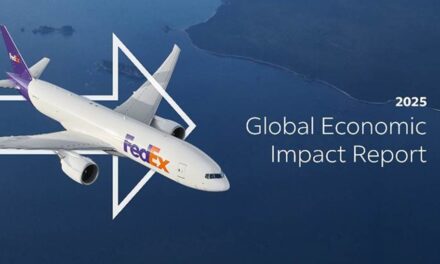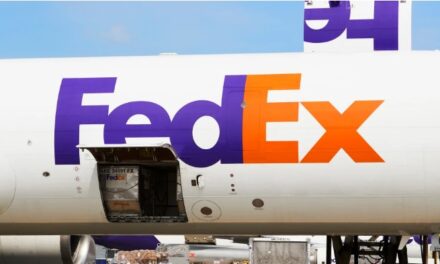
The shifting cargo scene is spreading out distribution of cargo operations along the North American east coast.
Of the top 25 North American East Coast airports reporting cargo figures for 2006, less than half reported greater than 1 percent growth. Eleven reported declining business while three, including John F. Kennedy International, reported less than 1 percent.
As with most statistics, the broad figures can be misleading, disguising changes below the surface. Virtually all of the airports are being hamstrung by a very stagnant domestic market, which has become divided into an integrator market, which is showing some growth, and the non-integrator market, which is contracting.
The major growth from the express carriers is being driven to some degree by what some call DPIJ – Domestic Portion of International Journey. This is throwing cargo traffic to the secondary and tertiary airports along the Eastern seaboard that are heavily supported by the express carriers, such as Piedmont-Triad International Airport, serving Greensboro, High Point and Winston-Salem, N.C..
Triad is already showing growth from the planned opening of a FedEx regional hub in mid-2009. "The catalyst for cargo growth starts with FedEx," said Triad Executive Director Ted Johnson. "Even though FedEx has not opened up yet, there will be some industries moving into the area to use FedEx." Triad reported a 3.8 percent growth in 2006.
Most of the express package deliveries will be probably be plane-to-truck, rather than plane-to-plane as is normal at the main FedEx hub in Memphis, Johnson said. A prime reason for the airport being selected for the regional hub was its road network, with five interstate highways passing nearby, providing fast delivery times north and south along the Atlantic seaboard, he said.
Another issue hitting secondary and tertiary airports along the east coast is the mass migration of industrial manufacturing from Europe to Asia in general and China in particular.
Consumer goods manufacturing has long since moved to Asia. Now industrial goods that were manufactured by companies in Europe are also being outsourced to Chinese or other Asian manufacturers.
While a lot of those goods obviously will be shipped by ocean transport, air cargo should grow following the air service accord signed between the United States and China last May. That accord will significantly increase flights allowed between the two countries, with flight frequencies to be doubled over the next five years. All restrictions will be lifted for cargo flights by 2011.
A lot of those manufactured goods will enter North America via the West Coast or into Chicago, and then head east by truck or train. However, airports such as Washington Dulles International, Atlanta's Hartsfield-Jackson International or Toronto's Lester B. Pearson International are showing strong growth from both freighter and belly capacity from Asia.
A major factor in that growth comes from U.S. carriers, which are increasing emphasis on international traffic, primarily United, Delta and US Airways.
Dulles is a secondary cargo airport that, on paper, has grown marginally over the past 10 years. In 1997, Dulles handled 350,000 tonnes of freight. In 2006, it handled just under 350,827 tonnes. After declines in the wake of September 11, the airport posted a 6 percent growth in 2006 over 2005.
Dulles handled 191,000 tons of international freight in 2006 compared to 120,000 tons in 1997, with a large part due to United's increased international service. Today, United accounts for 42 percent of the cargo passing through Dulles, strictly through belly capacity, said Richard Norris, head of air cargo development for Dulles.
Atlanta's Hartsfield-Jackson International is being heavily impacted by Delta's increased emphasis on international traffic, said Warren Jones, Hartsfield-Jackson's aviation development manager. While mail has dropped 80 percent and domestic cargo slid 9 percent during 2006, partly as a result of Delta's shift to narrowbody aircraft for its domestic routes, international traffic rose 14 percent to 391,909 metric tons for the year and is continuing to grow through 2007, he said.
Along with Delta's belly cargo, all-freighter traffic has greatly increased out of Atlanta, Jones said. Ten years ago, Atlanta had only seven weekly all-cargo flights to Asia and 17 to Europe. Today, the airport has 28 weekly all-cargo flights to Europe and 34 to Asia – Taipei, Hong Kong and Narita, Jones said. Delta is planning new 777 service to Shanghai this March, further expanding the Atlanta-Asia bridge.
US Airways also is emphasizing international service, and hopes to have a 5 percent growth in cargo at its two East Coast hubs in Charlotte and Philadelphia. This move could have a positive impact on the two airports that both reported negative cargo flow in 2006 compared to 2005.
Demand out of Asia is also causing an increase in capacity, which is prompting some carriers to put their freighters elsewhere. This is affecting the East Coast airports particularly, said Robert Dahl, project director for the Air Cargo Management Group.
The sharp growth in cargo to the Middle East also is being felt at secondary and tertiary East Coast markets. Ram Menen, head of cargo for Emirates, said trade between the United States and the Gulf States "is still quite robust as most of the countries have their currencies pegged to the U.S. dollar, which makes the American products more attractive."
Toronto's Pearson is benefiting from new Middle East service with introduction of Etihad Airways out of Abu Dhabi and thrice-weekly Emirates flights from Dubai. The airport also has direct freighter service from Asia via two daily freighter flights by Korean Air and three weekly flights by Cathay Pacific, said Mark Ruel, manager for cargo and aviation support for Pearson.
Pearson saw a 24 percent growth in cargo from scheduled freighters in 2006, plus a 6 percent growth in all-cargo charters. "Toronto Pearson is also a platform for heavyweight charter operators," Ruel said.
Any future growth at Pearson "will depend on new international freighter services introduced into the market," Ruel said.
Some East Coast airports are growing simply because of local economic expansion. In the 1990s, Florida's Tampa International Airport started building cargo capabilities through an effort headed by George Elbe, head of airport development. There was some success, primarily through improved infrastructure, but most international carriers serving Central Florida wanted to go to Orlando.
However, in 2006 Tampa International reported a 19.8 percent growth, second only Huntsville among East Coast airports. A major portion of this growth was because McDill Air Force Base, headquarters for the U.S. military management of the Iraq war, is in Tampa, said Trudy Carson, director of air services development. Most of the international traffic comes via FedEx, she said, although British Airways flies in daily from London with cargo that originated in the Middle East.
While some smaller airports on the East Coast are emerging as cargo centers, there is not a mass migration away from the traditional gateways. Both Kennedy International and Miami International are too well entrenched to surrender much cargo traffic to secondary airports. International carriers have too much invested in those airports. Korean Air Lines Vice President for Cargo Derek Han said KAL opened an automated terminal at JFK in 2001, "so we have no plan to divert some flights to other airports."
Newark International's domestic and international cargo service is growing as well, advancing 22.5 percent between 2001 and 2006.
The key change in JFK cargo operations is that it is becoming more of a local market, "meaning that there is enough local demand in terms of destination distribution centers that ring within 100 miles of New York," said Clancy, "that it is becoming increasingly less efficient and more expensive to flow stuff in, say from Asia, on a freighter and then do road feeder service down to Richmond or to Norfolk or Charlotte.
The issues are showing up in sagging numbers. Kennedy freight traffic was down 2.5 percent in the first 11 months of 2007, and the international side was off 2.9 percent.












